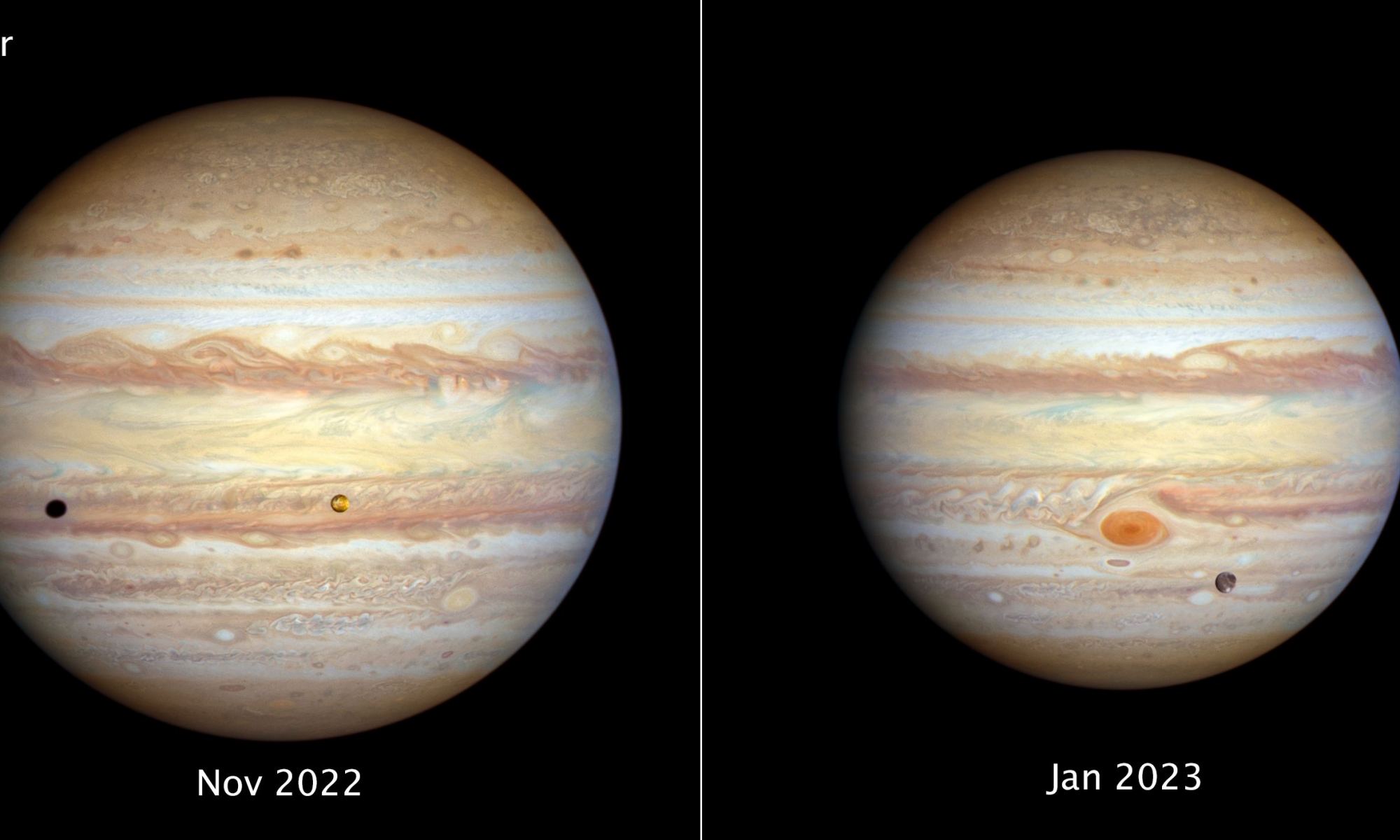A couple times a year, the Hubble Space Telescope turns its powerful gaze on the giant planets in the outer Solar System, studying their cloudtops and weather systems. With the Outer Planet Atmospheres Legacy (OPAL) Program, Hubble provides us with these views and also delivers weather reports on what’s happening. Here’s an updated report and some new images of the stormy surfaces of Jupiter and Uranus.
According to Hubble, the forecast for Jupiter continues to be stormy, especially at low northern latitudes. In just the past decade, a prominent string of storms have formed, creating what’s called a “vortex street,” which is especially visible in the image from November 12, 2022. This is a wave pattern of nested anticyclones and cyclones, “locked together like in a machine with alternating gears moving clockwise and counterclockwise,” according to planetary scientists. NASA says that if the storms get close enough to each other, they could merge into a storm even larger than Jupiter’s notorious Great Red Spot. These storms have only sprung up recently, as in the 1990s and early 2000s, these types of storms weren’t around. But these storms seem to be getting more active over time, and the strong color differences indicate that Hubble is seeing different cloud heights and depths as well.
The black dot on Jupiter’s western side is from the moon Io, which is visible as an orange sphere near Jupiter’s center. If you zoom in on the full-size version of this image, found here, you’ll see that Hubble’s resolution is so sharp that you can make out Io’s mottled-orange surface, which comes from the numerous active volcanoes.
In the most recent image from January 6, 2023, the Great Red Spot shows up perfectly. NASA says that although this vortex is big enough to swallow Earth, it has actually shrunk, and is now the smallest size it has ever been over observation records dating back 150 years.
Just below and to the right of the GRS, Jupiter’s icy moon Ganymede can be seen.
Why is this view of Jupiter smaller than the image from just a few months ago? Jupiter was 130,350 km (81,000 miles) farther from Earth (and Hubble) when the photo was taken.

Moving on to Uranus, Hubble has been watching an extensive storm system at the north pole of this planet getting brighter each year as the planet approaches the peak of summer in its northern hemisphere. Of course, Uranus is tilted on its side, and so the north pole is can be found where the equator would be on our Solar System’s other planets.
Comparing images from 2014 to this latest image taken on November 10, 2022, this giant storm system now covers a large percentage of the planet. NASA says that at the Uranian equinox in 2007, neither pole was particularly bright. Now, planetary astronomers are trying to discern how and why this polar storm continues to grow. It might involve various atmospheric effects, from circulation, particle properties, and chemical processes, which control how the atmospheric polar cap changes with the seasons.
As northern summer solstice approaches in 2028 the cap may grow larger and brighter still, and will be aimed directly toward Earth, allowing good views of the north pole. Additionally, the ring system, clearly visible here, will then appear face-on. This will provide new and unique views of the rings.
These Hubble views of the Solar System’s gas giants complement observations from the spacecraft visiting these worlds, such as Juno, currently orbiting Jupiter. When the Cassini mission — which plunged into Saturn in 2017 — was orbiting the Saturn system, astronomers could compare the views from Hubble and Cassini, providing more insights. Additionally, planetary scientists can look back at images from the Voyager 1 and 2 probes, which collectively flew by all four giant planets between 1979 and 1989, and compare with the recent Hubble images to track changes over time of the weather on planets in the outer Solar System.

